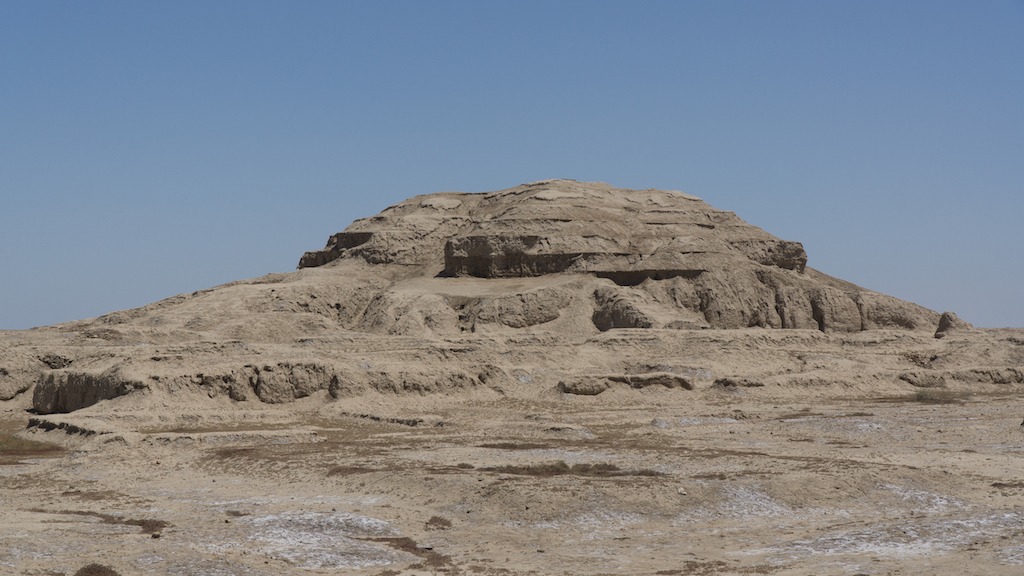Back in the day some major scientists had some interesting ideas about alien life. The following is from interestingengineering.com about how we viewed alien life over the years:
"Some very serious scientists had some very weird ideas about alien life.
By John Loeffler
Nowadays, we take the search for extraterrestrial life very seriously, using everything from radio telescopes to seeking out laser pulses in the night sky that might be alien communications. We try to imagine what such alien life might look like and admit that, for the most part, we have no idea and leave such things to the imaginations of science fiction writers.
"A real alien would be so far from anything we've ever imagined that we would barely be able to comprehend its existence," Sci-fi author Aaron S. Rosenberg told Popular Mechanics in May 2021. "And we would seem just as completely, bafflingly bizarre to it."
It's no wonder then that those who tried to envision alien life over the centuries would have some wildly divergent ideas about what it might be like.
Like our modern "little green men" concept of aliens, which are really just modified versions of human beings, scientists, philosophers, and writers throughout the ages have fallen back on what they already knew in the natural world and simply made it alien, coming up with some rather wild ideas in the process.
The Earliest Aliens
Speculation about aliens goes all the way back to the early Greek philosophers, Democritus and Epicurus, who reasoned that Earth was just one of many worlds in the universe and that those worlds were likely inhabited by lifeforms just as Earth was.
The Epicurean Roman poet Lucretius wrote of the possibility of life on other worlds, saying, "nothing in the universe is unique and alone and therefore in other regions there must be other earths inhabited by different tribes of men and breeds of beasts."
One of the earliest written speculations on possible alien life on another world comes from the Greek-speaking Lucian of Samosata, who lived from 125 to at least 180 CE. Born in Roman Syria, which includes modern-day Turkey, Lucian was a witty satirist whose work drips with sarcasm which he often turned against his fellow writers of the era.
Writers during his time were used to liberally mixing truth with myth, so Lucian wrote his Vera Historia, or A True Story, as a send-up of his contemporaries. In it, he describes a journey to the Moon and all of the strange and wonderful creatures he finds there, including three-headed vultures, fleas the size of elephants, and humans that sweat milk.
While clearly a work of fantasy — Lucian didn't pretend that it was anything but — it is still one of the earliest written attempts to describe what life on another world might look like, and it too distorted or inverted known life-forms to make them seem alien to us.
The Middle Ages
There are folks tales from around the world about people or spirits of the Moon and Sun, like some versions of the Japanese The Tale of Princess Kaguya where Princess Kaguya is sent to Earth by the people of the Moon during a war in the heavens, many of these don't necessarily see the Moon as other-worldly or its inhabitants as particularly alien.
In Europe, meanwhile, Aristotlean philosophy held significant sway during the Middle Ages, but theologians of the era — generally the only Europeans with anything like an advanced education — were much more accepting of the idea of alien life than the ancient Greek Aristotleans were.
Using a geocentric model of the universe, though, led to some interesting ideas about what alien life might be like, all of it filtered through the prism of Christian theology.
"It may be conjectured that in the area of the sun there exist solar beings, bright and enlightened denizens, and by nature more spiritual than such as may inhabit the moon. … [W]hilst those on earth are more gross and material," wrote Nicolas of Cusa in the 15th century.
His writing on the potential for other worlds and alien denizens different in nature than life on Earth were influential and prompted a great deal of theological debate about the nature of alien life, particularly around whether Christ's death and resurrection also redeemed alien life along with humanity.
"If it be inquired if men exist on that world and whether they have sinned as Adam sinned, I answer no, for they would not exist in sin and did not spring from Adam," wrote the French theologian William Vorilong.
Vorilong would also go on to write that "[a]s to the question whether Christ dying on this earth could redeem the inhabitants of another world, I would answer that he is able to do this even if the worlds were infinite. But it would not be fitting for him to go unto another world that he must die again."
These medieval ideas about alien life being uniquely distinct from humanity, in that they were not the offspring of Adam and Eve, would influence later perspectives on alien life elsewhere. Specifically, many would come to see other worlds and alien life as idyllic places where a kind of pre-Fall innocence reigned.
Aliens During the Scientific Revolution
By the time the 1600s rolled around, ideas about alien life on other worlds were firmly embedded in the culture of Europe.
In 1638, Francis Godwin, an Anglican bishop, wrote The Man in the Moone, wherein an Earthling builds a spaceship, travels to the Moon, meets aliens that were twice the height of the human explorer, Domingo Gonsales.
They wore clothes made from alien material and even the colors of their clothes were unknown to the human explorer. Their language, meanwhile, was conveyed in an otherworldly musicality.
Many of these tropes would recur again and again during the two and a half centuries that followed.
Another major theme that runs through the history of imagined aliens is our projection onto them the conflicts of our era. In an early work of feminist literature, Margaret Cavendish's The Blazing World (published in 1666) imagines a world apart from our own with notably different constellations, populated by talking animals, "fish men", and "bird men".
These aliens crown her the Empress of the Blazing World and she proceeds to engage in philosophical and scientific debates with the scholars of the Blazing World, before rallying its denizens to invade her homeland and make it part of the utopian empire she rules over.
Clearly written by a woman, The Blazing World serves as a critique of our own society, with the alien species on this other planet treating her as an intellectual equal and even a military leader that they follow into battle, something women of Cavendish's era weren't just forbidden from doing but were considered by "learned" society as being incapable of doing.
From a scientific perspective, the idea of alien life couldn't help but be fanciful and speculative. By Cavendish's time, the telescope was only about 60 years old, and though she was an English duchess, such instruments found a ready following among many women like herself. Most observatories were private and were often a family affair. While women rarely worked outside the home, and were barred from most educational societies, the wives and daughters of astronomers often acted as assistants, technicians, and human computers, and a number made important discoveries.
However, the instruments of the time weren't yet powerful enough to reveal the lifelessness of the Moon, much less any other world.
That's not to say people didn't try, though. Famed British astronomer William Herschel (who often worked with his younger sister and fellow astronomer Caroline Lucretia Herschel)—who discovered the planet Uranus in 1781—argued that the newly-identified sunspots on the Sun were mountaintops poking through the luminous atmosphere of the Sun. He even argued that the Sun itself was habitable and populated, "by beings whose organs are adapted to the peculiar circumstances of that vast globe."
This isn't as strange as it sounds, at least for the time. Until the 20th century, in fact, the idea that every other planet in the solar system wasn't inhabited like Earth was considered the unorthodox position. Why would the Sun be any different?
The Moon was obviously the most common place where most looked for alien life, even though by Galileo's time it was clear that the Moon, though rugged like the surface of Earth, had no life on it.
That didn't stop people speculating though. The Great Moon Hoax of 1835, wherein the New York Sun published a six-part series purporting to be from a scientific paper by Herschel in England, described a fantastical lunar landscape full of amethyst cities populated by bat-men and unicorns.
People the world over bought into the hoax, aided in no small part by the false connection to Herschel, and even educated academics accepted the tale as legitimate. After the hoax was exposed, people weren't even mad — not even Herschel, who is claimed to have said when he heard of it that: "It is only a great pity that it is not true."
The same kind of thinking persisted even into the 20th century, when the ongoing debate about the nature of Venus, Earth's sister-planet in terms of size and, it was thought, features, led to some rather fantastical theories.
In 1895, Gustavus W. Pope published Journey to Venus, a science fiction tale about a US Navy officer and a Martian princess traveling to the planet Venus and finding it a primitive world like something out of the Cretaceous, full of dinosaur-like beasts and covered in swamps.
For some reason, this idea held onto our consciousness, even after science had begun to find evidence that there wasn't any oxygen or water vapor in the thick cloud cover of Venus. Like the Great Moon Hoax, people wanted to believe the story so much that in Carl Sagan's Cosmos, the renowned science educator described the theory of Venusian dinosaurs as such:
I can’t see a thing on the surface of Venus. Why not? Because it’s covered with a dense layer of clouds. Well, what are clouds made of? Water, of course. Therefore, Venus must have an awful lot of water on it. Therefore, the surface must be wet. Well, if the surface is wet, it’s probably a swamp. If there’s a swamp, there’s ferns. If there’s ferns, maybe there’s even dinosaurs.
Like Venus, Mars also grasped the imagination and blurred the line between science and fiction. In 1894, Percival Lowell published his map of the Martian "canals", which he claimed showed proof of an alien civilization attempting to move water from the poles to the equator.
This, he and others speculated, revealed a civilization attempting to fight back against the desertification of its planet, and many imagined the kind of hopeful political environment that a unified global response to a changing climate would represent.
Again, these kinds of ideas were much more about humans in the early 20th century than they ever were about Martians.
Facing Up to the Lonely Reality
It was during the 20th century though that a lot of the ideas about alien life in our solar system started crashing into reality.
When the Soviet Union and the United States landed the Venera IV and Mariner 5 probes on Venus in 1967, the true, inhospitable nature of the planet was revealed. There were no swamps or dinosaurs on Venus, just 800-degree-Fahrenheit (425 deg. C) temperatures and a choking carbon dioxide atmosphere with as much pressure as found nearly a kilometer beneath the surface of Earth's oceans.
Similarly, it wasn't until the Mariner 4 flyby of Mars in 1965 that we understood that planet was also inhospitable to life. Just prior to that flyby, however, Sagan himself had published a paper, stating:
The present body of scientific evidence suggests, but does not unambiguously demonstrate, the existence of life on Mars. In particular, the photometrically observed waves of darkening which proceed from the vaporizing polar caps through the dark areas of the Martian surface have been interpreted in terms of seasonal biological activity.
Once our instruments were able to actually visit these other worlds, then, there could be no doubt that the overabundance of life in the solar system that we had taken for granted since the time of the Ancient Greeks was an illusion.
Even as our hopes for alien life in the local solar system took a beating, however, new possibilities have begun to open up. With the discovery of exoplanets around other stars, the prospect of identifying life on other worlds has taken on new life and our ideas about aliens from films to movies to video games barely missed a beat this entire time.
What has changed, if anything, is a bit more humility on our part and an understanding that if there are going to be aliens out there, we might be getting ahead of ourselves in drawing their portrait before we even know that they exist."
Personally I do believe there is other life out there. We just started to discover Earth size and Super Earths in the goldilocks zone. Some has water! So there may not be any life in our solar system outside of us perhaps, but this does not discount life on other worlds out side our solar system.
Reference: https://interestingengineering.com/moon-bats-venusian-dinosaurs-and-the-history-of-alien-life
I have lost a lot of faith with the Medical Community and the Governments over the last several years, but there are a few good things that can raise above the corruption and the pushing of drugs a new approach to heal people. The following is from www.gaia.com and written by Hunter Parsons that does not involve any drug or pushing an ineffective so called vaccine that the drug company is not held accountable in any way but they use sound! The use of sound can regrow bone tissue! Here is the story:
"The future of regenerative medicine could be found within sound healing by regrowing bone cells with sound waves.
The use of sound as a healing modality has an ancient tradition all over the world. The ancient Greeks used sound to cure mental disorders; Australian Aborigines reportedly use the didgeridoo to heal; and Tibetan or Himalayan singing bowls were, and still are, used for spiritual healing ceremonies.
Recently, a study showed an hour-long sound bowl meditation reduced anger, fatigue, anxiety, and ...
Not a fan of a Defense Agency studying Anti-Gravity and other Exotic Tech, but if the commercial world and make this technology cheap that will change our world yet again. The following is about three minute read and from www.gaia.com. The below was written by Hunter Parsons:
"Wormholes, invisibility cloaks, and anti-gravity — it’s not science fiction, it’s just some of the exotic things the U.S. government has been researching.
A massive document dump by the Defense Intelligence Agency shows some of the wild research projects the United States government was, at least, funding through the Advanced Aerospace Threat Identification Program known as AATIP.
And another lesser-known entity called the Advanced Aerospace Weapons System Application Program or AAWSAP
The Defense Intelligence Agency has recently released a large number of documents to different news outlets and individuals who have filed Freedom of Information Act requests.
Of particular interest are some 1,600 pages released to Vice News, which ...
As our technology gets better we are discovering more about the history of mankind and pushing the timeline back further and further. The following article is from www.gaia.com and written by Michael Chary that discusses this new find that changes the historical timeline:
"Over the past decade, there have been a number of archeological revelations pushing back the timeline of human evolution and our ancient ancestors’ various diasporas. Initially, these discoveries elicit some resistance as archeologists bemoan the daunting prospect of rewriting the history books, though once enough evidence is presented to established institutions, a new chronology becomes accepted.
But this really only pertains to the era of human development that predates civilization — the epochs of our past in which we were merely hunter-gatherers and nomads roaming the savannahs. Try challenging the consensus timeline of human civilization and it’s likely you’ll be met with derision and rigidity.
Conversely, someone of an alternative...
Not sure if you have heard of a show on YouTube called "The Why Files". If not you should check it out it is interesting and has some humor with it on different subjects. Last weeks was on a different theory how the Universe works and how main stream Science is attempting to shut it down like is always seems to do if it goes aguest some special interest. Today it is akin to what happened to those who questioned the Earth was the Center of the Universe that main stream so called Science all believed during the Renaissance period, They called any theory that the Earth was not the Center of the Universe misinformation. Does this sound familiar today? People laughed and mocked people like Leonardo da Vinci, Nicolaus Copernicus, Georg Purbach as crack-pots, conspiracy theorists, nut-jobs and they were suppressed and even imprisoned for their radical thoughts and observations. Again it sounds like today in so many ways. In any event this is a good one to ponder and see even if a bad idea ...
Seemingly chaotic systems like the weather and the financial markets are governed by the laws of chaos theory.
We all have heard about chaos theory, but if you have not or have forgotten what chaos theory is well here you go from interestingengineering.com:
"Chaos theory deals with dynamic systems, which are highly sensitive to initial conditions, making it almost impossible to track the resulting unpredictable behavior. Chaos theory seeks to find patterns in systems that appear random, such as weather, fluid turbulence, and the stock market.
Since the smallest of changes can lead to vastly different outcomes, the long-term behavior of chaotic systems is difficult to predict despite their inherently deterministic nature.
As Edward Lorenz, who first proposed what became commonly known as the Butterfly Effect, eloquently said, "Chaos: When the present determines the future, but the approximate present does not approximately determine the future.""
You may have heard the term about chaos theory as a butterfly flaps its wings in Brazil,...
I for one have lost trust in Medical Doctors due to COVID and reflection that they seem to push pills for everything and untested so called vaccines that is using a unproven technology because the Government and the Medical Boards of the State told them to. There are a very few exceptions. Thus they do not address the key problem just prescribe more and more pills to keep you alive an sick longer for them and Big Phama to profit from you. Will AI do any better? Well that depends on what was used for the training of AI. If it also pushes pills and vaccines without question then you have the same problems noted above. However, if the AI Training includes all possible forms of treatment and they zero in on the right issues for the true problem then there is possibilities they would be way better than most of the current Medical Doctors today.
The following is from an article from interestingengineering.com and written by Paul Ratner:
"A new study looks at how accurately AI can diagnose patients. We interview the researcher, who weighs in on AI's role ...


























